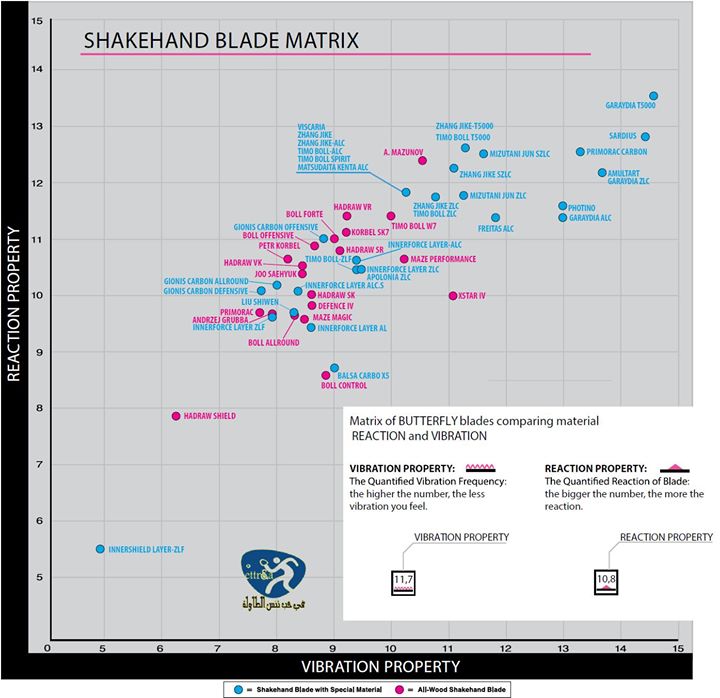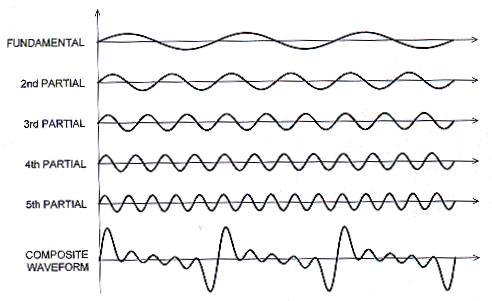stiff VS hard blade?
Printed From: Alex Table Tennis - MyTableTennis.NET
Category: Equipment
Forum Name: Equipment
Forum Description: Share your experience and discussions about table tennis equipments.
Moderator: haggisv
Assistant Moderators: position available
URL: http://mytabletennis.net/forum/forum_posts.asp?TID=79925
Printed Date: 04/26/2024 at 9:31pm
Software Version: Web Wiz Forums 12.01 - http://www.webwizforums.com
Topic: stiff VS hard blade?
Posted By: TAW
Subject: stiff VS hard blade?
Date Posted: 08/08/2017 at 3:30am
what are the deterrents between stiff and hard blade? or stiff blade mean what? hard blade mean what? ------------- taw |
Replies:
Posted By: Tinykin
Date Posted: 08/08/2017 at 4:06am
|
Others can correct me, but I've always assumed that these terms relate to how players perceive the blades' playing characteristics. Stiffness is the flexibility of the blade in play, eg Stiga Alser and the old Bengsston version are so flexy that they are known for breaking at the neck. Great control usually. Hardness relates to the material (mostly) of the blade and how it feels when striking the ball. eg Koto blades tend to have a harder feel than its limba counterparts. Let me add one more, mushy. Mushy relates to a certain lack of feel in that the player tends not to be able to relate to what's happening. Several carbon blades fall into this category ------------- Blade: Darker Speed90 Rubber Fh and Bh DHS Hurricane 3, 39/38deg Delusion is an asset |
Posted By: *_strataras_*
Date Posted: 08/08/2017 at 4:07am
|
In very few words, stiff blade means a blade which has no vibrations when the ball hits the racket. (You dont feel the blade decently vibrating in your hand) Hard blade means a blade wich has hard feeling. In other words, when the ball hits the blade, the racket leaves a feeling in the hand, and some blades leave soft feeling and some others medium or hard feeling. ------------- OSP Virtuoso SQST Tenergy 05(black 1,9mm FH) Tenergy 05(red 1,9mm BH) http://mytabletennis.net/forum/forum_posts.asp?TID=74157&title=feedback-strataras" rel="nofollow - Feedback |
Posted By: Magic_M
Date Posted: 08/08/2017 at 12:32pm
+ 1  Let me add two examples to explain the difference Butterfly Keyshot Light = stiff, but with soft feeling Nexy Calix = flexy with hard feeling The thicker a blade is, the stiffer it is (normally) ------------- http://mytabletennis.net/forum/forum_posts.asp?TID=51774&title=feedback-magic-m" rel="nofollow - My Feedback |
Posted By: taczkid
Date Posted: 08/08/2017 at 12:46pm
|
Stiff = NO Flex/No Vibration Hard = hard wood,carbon usually refers to the feeling of the blade(high pitch when knocking on it with finger) Most of the carbon (off +) blades like Schlager Carbon (are both stiff and have a hard feeling. |
Posted By: icontek
Date Posted: 08/08/2017 at 1:07pm
I'm not sure that this is completely accurate. Look at stiff wooden blades like the clipper - they still have good feeling. The "no vibrations" is usually from the carbon or other fiber. Those fibers add stiffness but also dampen feel. That's why even flexible OFF- blades with carbon fiber have less vibrations. ------------- http://bit.ly/vLMhuB" rel="nofollow - - RC1042 . OSP Virtuoso AC: PK50 + R42 |
Posted By: garwor
Date Posted: 08/09/2017 at 3:25am
|
stiff = no bending, no torsion ------------- http://stonitenis.rs/equipmentreviews" rel="nofollow - Equipment database Yinhe MC-2 FL fh: Xiom Vega pro bh: Xiom Vega pro Boycott Marcos Freitas for hidden services! |
Posted By: HuLimei
Date Posted: 08/09/2017 at 5:48am
These is no one true definition. A "stiff blade" is a blade that a MYTT user sells so he can buy "da current greatest blade wid soft feeling and long dwell tyme." |
Posted By: NextLevel
Date Posted: 08/09/2017 at 9:29am
There are different modes of vibration but the concept is still generally correct. ------------- https://youtu.be/jhO4K_yFhh8?t=115" rel="nofollow - I like putting heavy topspin on the ball... Cybershape Carbon FH/BH: H3P 41D. Lumberjack TT, not for lovers of beautiful strokes. No time to train... |
Posted By: TAW
Date Posted: 08/14/2017 at 6:12am
|
nowday ,, i notice butterfly blade gategory depend on reaction properties and vibration they do not speak about stiffness and hardness of blade as other company what did you think, why?   ------------- taw |
Posted By: Baal
Date Posted: 08/14/2017 at 7:02am
|
The key to this is that when a blade strikes a blade it vibrates at multiple frequencies which you sense in your hand and which gives it the feeling of how it plays. The lowest frequency of vibration is the flex. A blade that is stiff vibrates at a lower amplitude at that lower frequency. A flexy blade has a higher amplitude of vibration at the lowest frequencies. Blades also vibrate at higher frequencies simultaneously. (That is why a violin and a flute sound different even when they play the same pitch). Here is a picture that sort of shows the idea.  The composite waveform is the sum of the various vibrations occurring simultaneously. Most blades that are stiff are also hard, but they don't have to be. You could make a blade with hard woods, especially on the outside but make it relatively thin. A blade like that will flex but will also feel somewhat hard. Not many blades are like that but it is possible to build one. A lot of composite materials, and especially arylate (Vectran), kevlar, and various other polyarymides are really good at absorbing high frequency vibrations in materials. Zylon does not do that so much, so blades with zylon feel a little harder or crisper than blades with arylate. Arylate and arylate-carbon blades tend to have a "soft" feel even when they have relatively hard outer woods like koto because of the absorption of the high frequency vibrations by the composite layer, and also because in many cases the core wood of the blade is a softer wood. That is why a blade like a Viscaria feels relatively soft compared to something like, say, a Schlager carbon, or even a ZJK-sZLC. It is relatively stiff (but not as stiff as an Iolite or a Garaydia) and this is what gives it a larger "sweet spot" without it feeling like you are playing with a piece of glass. Balsa blades are actually made of a very soft material. The subject turns out to be really complex. |
Posted By: simone
Date Posted: 10/24/2018 at 6:35pm
|
I have uploaded a manuscript on this subject in this forum mytabletennis.net/forum/uploads/36100/table_tennis_blade_stiffness_measurement.pdf and a video on youtube(see the comment and the subtitles) related to the manuscript. https://www.youtube.com/watch?v=QKwVp_jCqa8&t=1s Maybe it can be useful to you |
Posted By: Tassie52
Date Posted: 10/24/2018 at 10:39pm
Thanks, Simone. Interesting reading - useful, but not as useful as it might be. For a start, there is a major problem with your work. You begin with an important question, but then conduct your tests without really examining the question you ask.
Because you haven't measured the stiffness of the blades, we don't know whether this is true or not. You have no objective measure of the blades you're using. The only information you've given us (and I suspect the only information you have) is:
In the final analysis, all we can say is that the frequencies correlate to the labels. But, as we all know, correlation does not imply causation.  |
Posted By: lineup32
Date Posted: 10/24/2018 at 11:06pm
|
The advantage of having a large number of entries on the Freq form is that provides an average effect so that you can see different brands and then look up there composition on another chart and begin to get an idea of why you like certain blades and not others. The important point about the Freq chart is that its another information point that combined with other information points can assist a player to evaluate why certain blade types appeal to them and not others. One does not have to look at the Frequency charts in absolute terms of speed or hardness but rather a direction based on the volume of entries which then can be scanned by a player to provide signals as to what type of woods or composition blades that have appealed to him in the past and how they look relative to others now. |
Posted By: simone
Date Posted: 10/25/2018 at 3:12am
|
Hi Tassie52 I try to explain my idea that can be wrong obviously, but it did work for me. The procedure of measurement of the dynamic stiffness of materials by the analysis of the sound spectrum is demonstrated (not by me) and applyed in different fields: the Young modulus of a material is related with the main frequency of resonance that can be obtained by the responce to an impulse (bounce of the ball on the blade). The idea is that the dynamic stiffness of the blade can be easily measured by using an application for smartphone and following the procedure described. Obviously the only information that I have to verify if the test is reliable is the feature of each blade as it is written on the catalogue (stiga, tibhar or donic) of that model and I also had a confirm of the outcome of the test by playing with those blades (and also others). I found the test reliable for my purpose. At the end of the manuscript I explain that the information we can get is indicative: for example if we play well with a blade that has a certain frequency of resonance (frequency of the peak) , we should choose blades in a range around that frequency. For example I found that the frequency of the blades that fit well to my game is between 1200 and 1300 Hz. Obviously it is just my idea, I suggest to try it and see if the information you get confirm the feeling when you use that blade.
|
Posted By: king_pong
Date Posted: 10/28/2018 at 7:24am
A stiff blade can be hard (e.g. Yasaka Ebony Carbon), but often, they make stiff blades a bit softer so as to increase dwell time a bit, thus helping with looping (e.g. Avalox P700 or BT777). Flexible blades can have a soft feeling, but they usually are made with a relatively harder outer plies to help increase their speed (e.g. From softest-hardest -- Stiga OC < Avalox P500 < Yasaka Extra Offensive). ------------- Stiga Infinity VPS (Master): fh/bh - Nittaku Hammond CR max |
 *_strataras_* wrote:
*_strataras_* wrote: